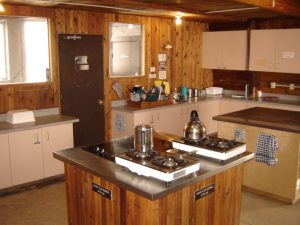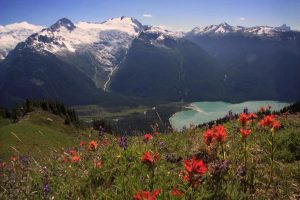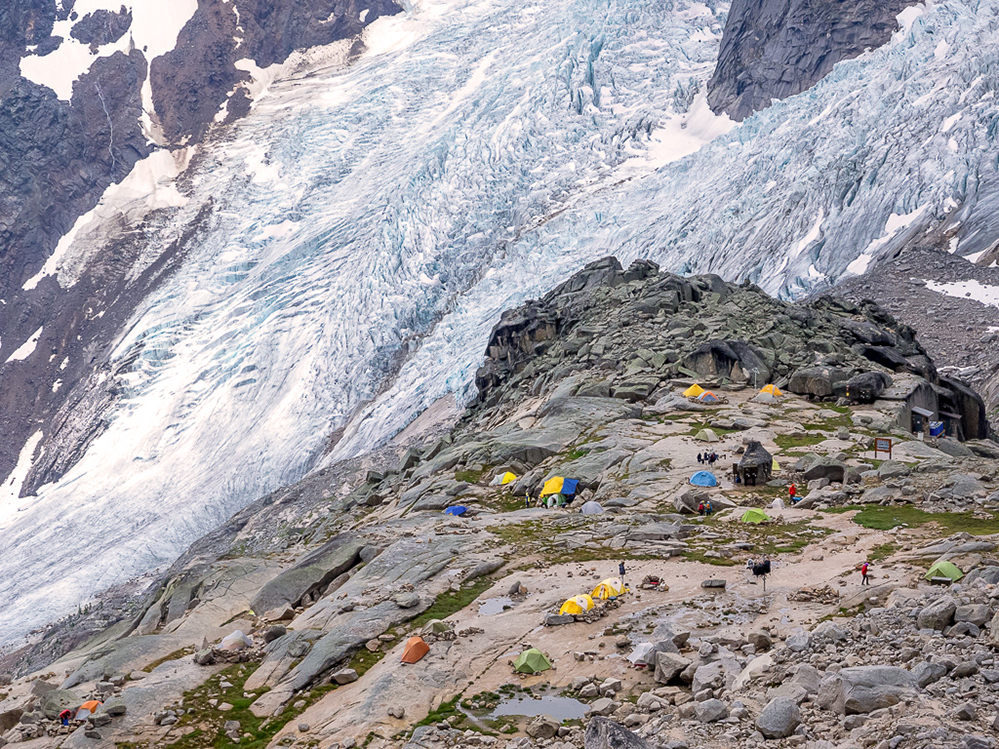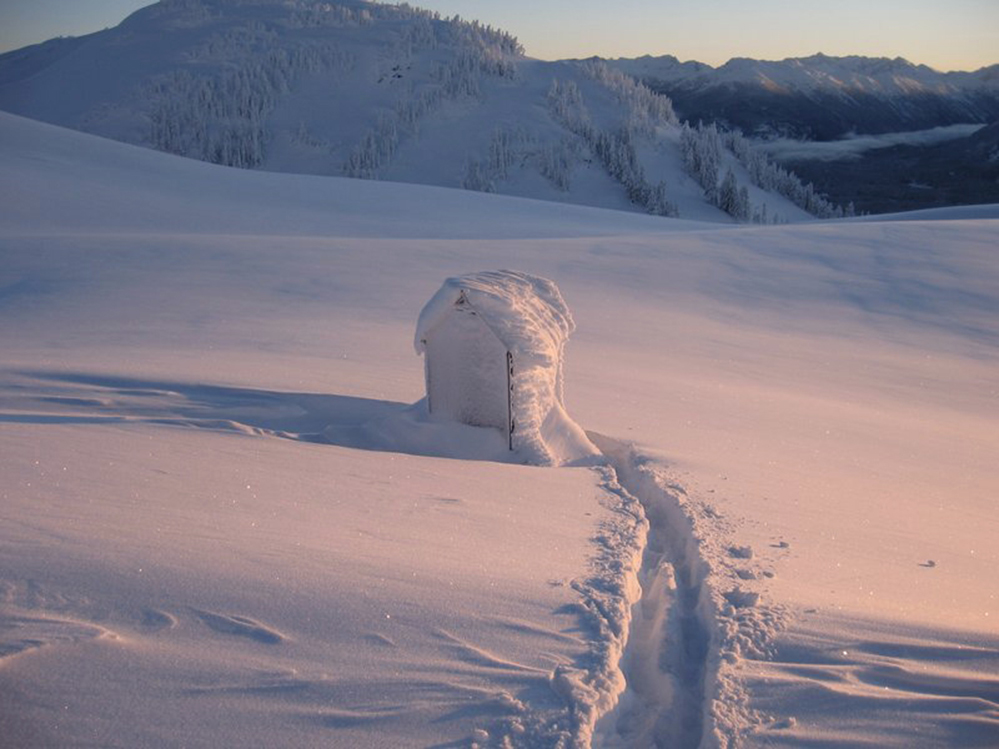14 – Hut Etiquette and Environmental Concerns
Over the past decade, backcountry exploration and camping has grown exponentially and is an important part of the province’s eco-tourism industry. The BC Parks Service and the mountaineering clubs have worked hard to build trails that provide access to huts and backcountry campgrounds. These organizations aim to limit the impacts of regular use on the sensitive alpine environment and protect it for future generations.
The rule of ‘pack-it-in and pack-it-out’ has been a long-repeated mantra in the province of British Columbia and is designed to protect and maintain our pristine natural environment.
Club hut access usually involves a fee for members and non-members using the huts, which helps cover the cost of flying in more firewood, removing human waste from outhouses, and other necessary maintenance, like replacing doors, windows, and Colman stoves and lamps. The fees for non-members’ use of the huts tend to be slightly higher than member rates, but are close enough not to dissuade non-member users from accessing the hut.

The cooking area in the Elfin Lakes Hut provides the necessary cooking equipment to accommodate its 35 occupants.
Some huts used to provide cooking stoves but due to mishandling and the cost of replacement, clubs have chosen to remove them from some huts, so it is up to the user to bring their own cooking stove.
For huts that operate year-round, firewood is important to have stocked and dry and this is generally maintained by the club and re-stocked by hut maintenance crews. However, it is seen as common courtesy to replenish what you have used.
When entering the sensitive alpine ecosystem, it is important to use the outhouse or designated areas to relieve one’s self so that the surrounding environment isn’t damaged and unwanted wildlife aren’t attracted to the hut.

In the summer, it is important to stay on the trail to help protect the sensitive alpine ecosystem and the blooming wildflowers.
The UBC-VOC holds the policy of “there is always room for one more”, whereas other huts have a strict number of occupants. This has led to official backcountry campgrounds being constructed to help deal with overflow, especially in popular areas.
According to BCMC’s David Scanlon, the new hut built at Watersprite Lake will also have backcountry campsites constructed with their own outhouses and food caches separate from the hut.

The Applebee Backcountry Campground located in Bugaboo Provincial Park and a short hike from the Conrad Kain Hut.
These huts are built for their efficiency and not necessarily for their comfort. At their essence, the huts provide refuge from inclement weather or provide a chance to share stories with fellow mountaineers.


